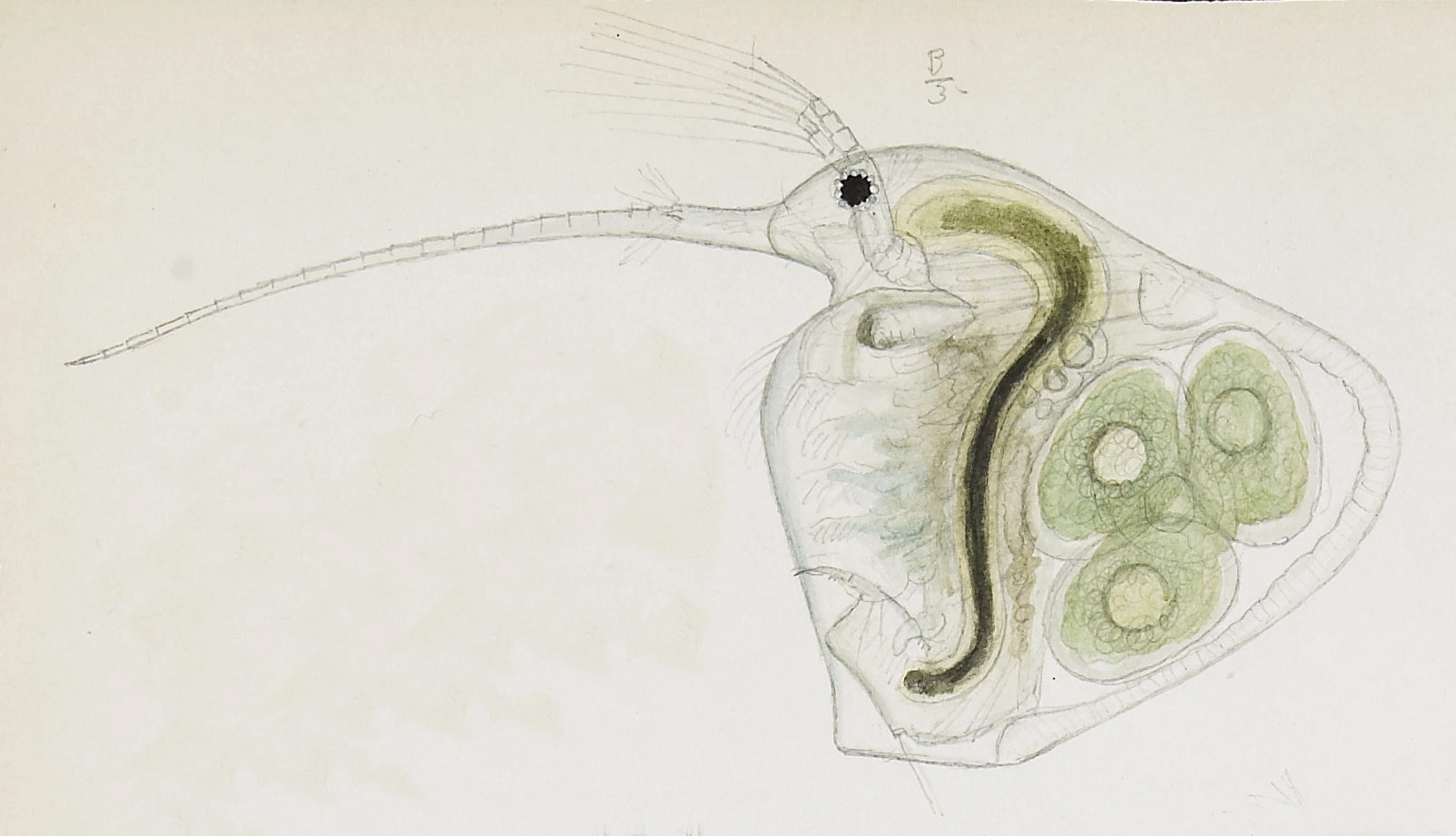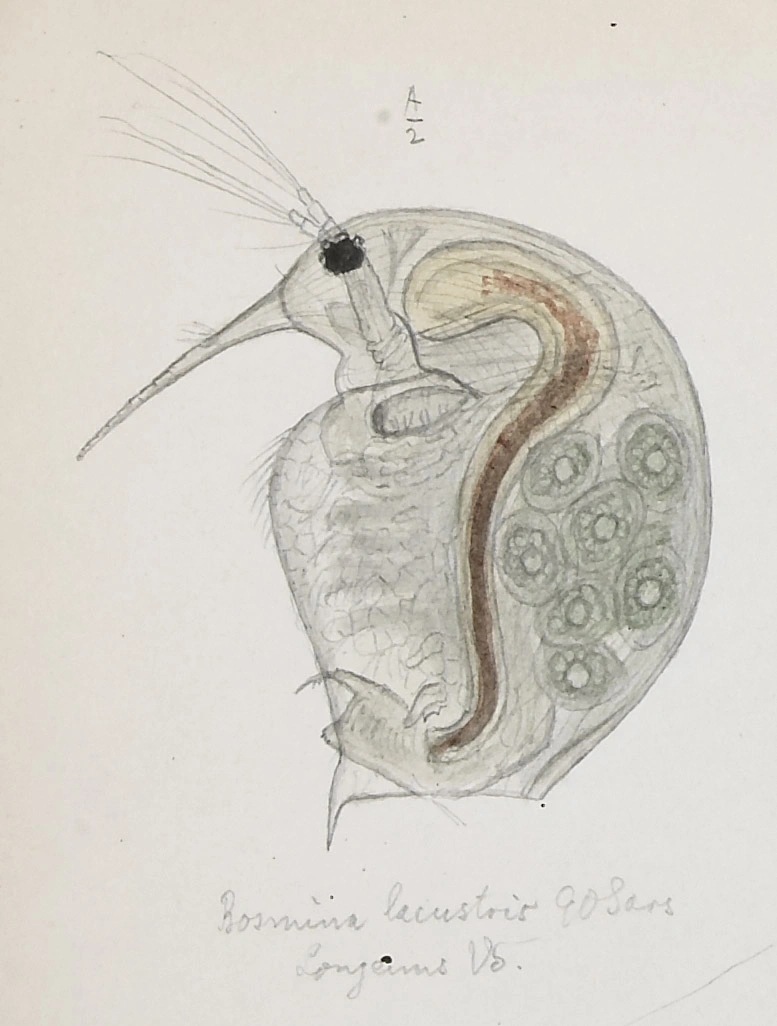Bosmina coregoni
Bosmina coregoni (female)
The strange shape of the carapace in Bosmina coregoni may be an adaption to avoid fish predation (cyclomorphosis). The species is always associated with nutrient rich lowland lakes with high densities of fish.
Key characteristics
Except for the shape of the carapace and different varieties of the rostrum, Bosmina coregoni resemble B. longispina. A number of variants have been described which all may be different forms of B. longispina. The species lives epilimnetic in stratified lakes and the cyclomorphosis may be an adaption to avoid fish predation. Carapace and rostrum may vary noticeably in form, but the postabdomen, which can normally be used to identify species, morphologically looks similar to that of B. longispina. The abdominal claw has 6–7 teeth increasing in size towards the end. The species is more or less colourless.
Female: Length 0.5–1.5 mm
Male: Length 0.3–0.6 mm
Ecology and distribution
B. coregoni is the less common of the three Bosmina sp in Norway, found in about 2 % of the waterbodies. The species is always associated with nutrient rich lowland lakes with high densities of fish. All records are from water bodies situated below 300 m a.s.l. and it is found all over the country being most common in the southeast.
| Vitenskapelig navn | < 4,5 | 4,5 - 4,9 | 5,0 - 5,4 | 5,5 - 5,9 | 6,0 - 6,4 | 6,5 - 7,0 | 7,0 - 7,4 | > 7,5 |
|---|---|---|---|---|---|---|---|---|
| 0 | 0 | 0,8 | 1,3 | 5,5 | 5,8 | 1,5 | 3,4 |
| Vitenskapelig navn | < 1,0 | 1,0 - 1,4 | 1,5 - 1,9 | 2,0 - 2,9 | 3,0 - 3,9 | 4,0 - 4,9 | 5,0 - 6,9 | 7,0 - 9,9 | > 10,0 |
|---|---|---|---|---|---|---|---|---|---|
| 0 | 0 | 0,5 | 0 | 1,7 | 1,7 | 12,7 | 3,8 | 3 |
| Vitenskapelig navn | < 0,01 | 0,01 - 0,09 | 0,1 - 0,9 | 1,0 - 9,9 | 10,0 - 99 | 100 - 999 | > 1000 |
|---|---|---|---|---|---|---|---|
| 0 | 0 | 0,5 | 0,5 | 2,5 | 7 | 10,7 |
| Vitenskapelig navn | < 100 | 100-299 | 300-499 | 500-699 | 700-999 | >1000 |
|---|---|---|---|---|---|---|
| 5,7 | 7 | 0 | 0 | 0 | 0 |
Look-alikes
Bosmina longispina

